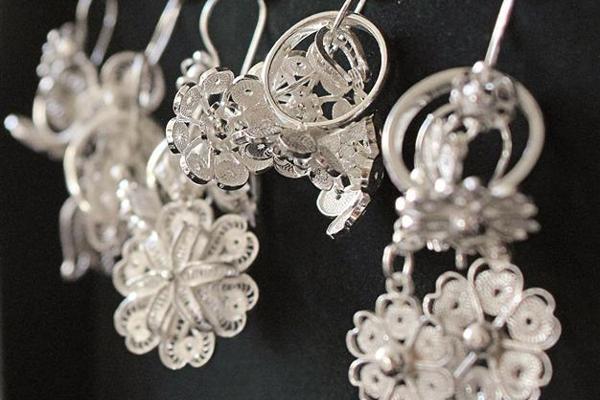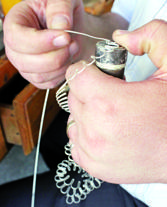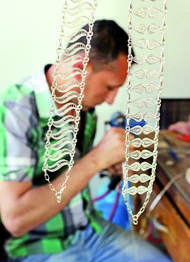Filigree art of Midyat shapes a new path to tourism
MİDYAT - Anatolia News Agency


The filigree work of Midyat is one of the most important artisan styles of the province. AA photos
Filigree artists and workers living in the town of Midyat, in the southeastern province of Mardin, have been working with silver for the past 450 years. They work with the best-quality silver jewelry in the world.The filigree work of Midyat is one of the most important artisan styles of the province. Filigree is a delicate kind of jewelry metalwork, usually of gold and silver, made with tiny beads or twisted threads, or both in combination, soldered together or to the surface of an object of the same metal and arranged in artistic motifs.
There are many objects made with filigree such as bags, jewelry, trays, mirrors, vases, spoons and many more.
The filigree art is a very popular art in terms of export. Many objects have reached foreign countries.


The base and the beginning of this art springs from Mesopotamia and Egypt, although it has been the main focus in Mardin for 800 years. It is known that Egyptian jewelers employed wire, both to lay down on a background and to plait or otherwise arrange. But, with the exception of chains, it cannot be said that filigree work was much practiced by them. Their strength lay rather in their cloisonné work and their molded ornaments. Many examples, however, remain of round plaited gold chains of fine wire, such as those that are still made by the filigree workers of India, and known as trichinopoly chains.
From some of these are hung smaller chains of finer wire with minute fishes and other pendants fastened to them.
Tourists especially show a great deal of interest in those accessories and objects, and many seek out shops to find the authentic filigree works.


One of the silver jewelry masters, Murat Aslan said that he had been working as a silver laborer since 1985. He said that the art of filigree was almost dying in Midyat, where 500 masters were working in 42 ateliers 30 years ago. “Now the number of filigree masters is not more than 10 and there are only three ateliers of hand-made manufacturing.”
Aslan said that the hand-workmanship was being defeated by time and technology, adding, “We use high-quality raw material in hand-made products. Midyat is the only place in the world where 950-karat silver jewelry is made. It may increase to 970-karat. We produce the high quality silver products. In recent years, people began to use a yellow substance named authentic. One kilogram of this substance is 12 Turkish Liras, silver is 2,000 liras, which is a huge difference. The jewelries made of these substances are sold at very low prices but our products bring more money because of the difference in quality. Filigree has a history of 850 years in Midyat. It is one of the oldest handicrafts in the world. But orders have decreased compared to past years as well as the number of visitors to Midyat.”
With the effect of the resolution process, Aslan believes that the number of tourists in the region will increase and that it will have a positive impact on silver craftsmanship overall.
